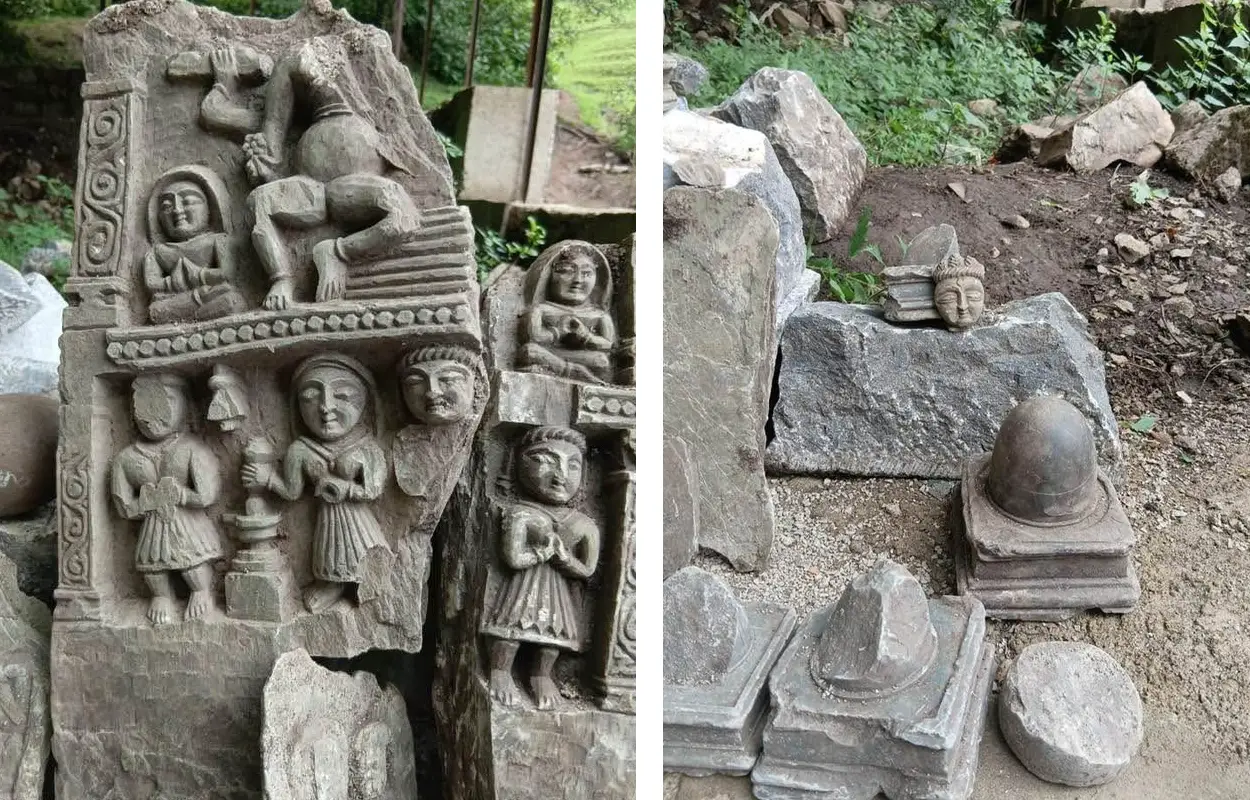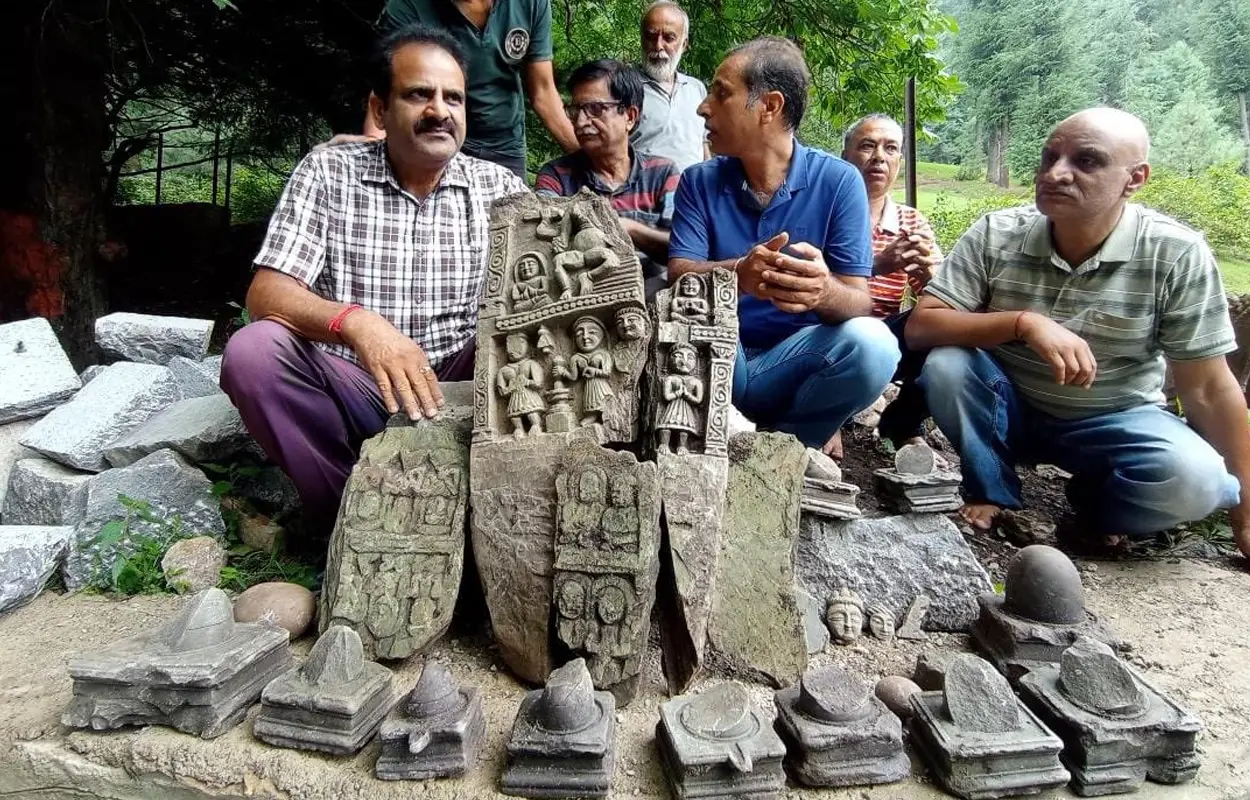A collection of ancient Hindu idols and Shiva Lingams were unearthed during restoration works of a sacred spring in the Karkoot Nag area of Aishmuqam, South Kashmir.
The water level of the spring had recently receded, revealing the submerged structure containing Hindu idols, including eleven Shiva Lingams, also known as “Shivlings”.
Shiva Lingams are an abstract or aniconic representation of the Hindu god Shiva in Shaivism. They are considered an emblem of generative and destructive power through the divine eternal process of creation and regeneration, and the union of the feminine and the masculine that recreates all of existence.
Archaeologists are yet to date the objects, but the site is linked with the Karkota dynasty which ruled over the Kashmir valley and northern parts of the Indian subcontinent during 7th and 8th centuries AD.

Officials from the Jammu and Kashmir Department of Archives, Archaeology and Museums believe it is highly likely that a temple once stood at the spring, suggesting the site may have been an important centre of pilgrimage and spiritual significance.
The discovery follows another recent discovery in Baramulla district near Khanpora, where another Shiva Lingam was recovered from the Jhelum River during sand extraction of the riverbed.
Director of Archives, Archaeology & Museums, Kuldeep Krishan Sidha, emphasised the cultural value of these finds, calling the Shiva Lingams “a testament to our enduring cultural legacy.” He assured that the department remains committed to preserving such treasures for educational and spiritual enrichment.
Header Image Credit : Press Trust of India
Sources : Jammu and Kashmir Department of Archives, Archaeology and Museums





